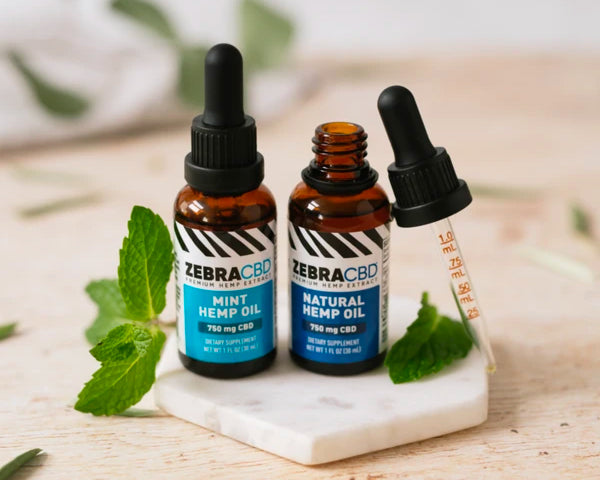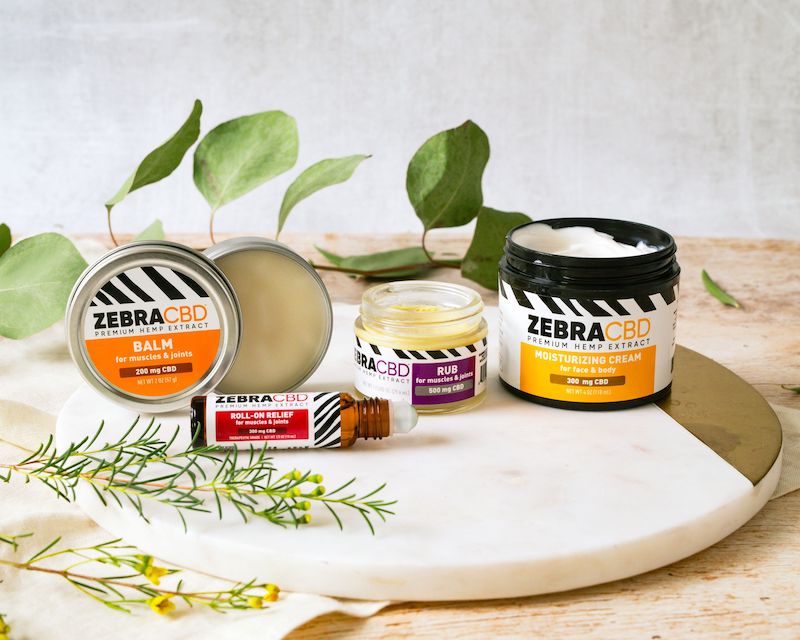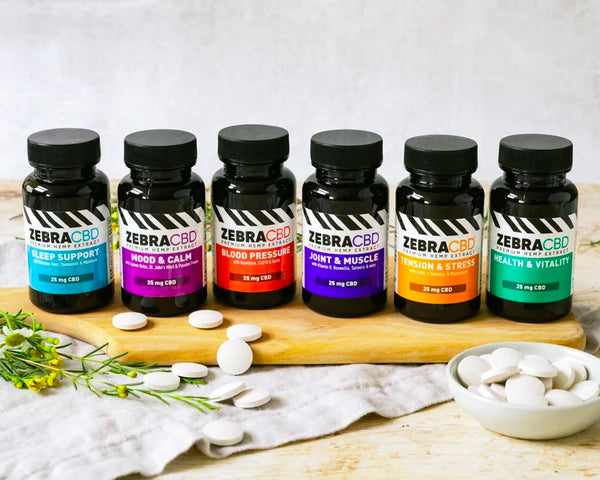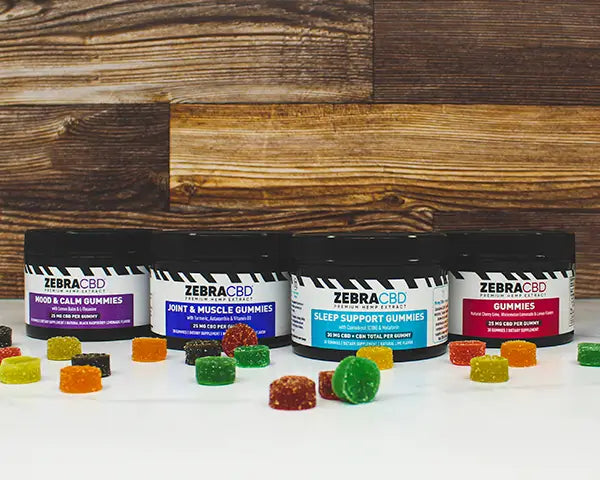
CBD for pain management has become a go-to solution for millions who want alternatives to regular pain medications. The numbers tell a compelling story - 54 million Americans battle debilitating arthritis, and 24 million can't go about their daily activities because of it. CBD usage grows faster among seniors, with 20% of Americans over 65 trying CBD oil compared to 14% last year.
Real-world results back up CBD's popularity beyond just stories. A survey of 428 people showed remarkable improvements - 83% felt less pain, while 66% moved better and slept better. CBD product sales could hit $16 billion by 2025, which shows how much people trust these products. These impressive figures raise questions about the science behind CBD's effectiveness and ways you might benefit from it.
This piece breaks down what science tells us about CBD's impact on different types of pain. You'll learn how to pick the right products and understand important safety facts before you give it a try. We stick to facts and research instead of making big promises. This helps you make smart choices about managing your pain.
Why people are turning to CBD for pain relief
People are looking for new ways to deal with chronic pain as concerns about traditional pain medications continue to rise. Pain impacts millions of Americans each day, and finding relief without serious side effects has become a top priority.
Concerns with traditional pain medications
Traditional pain relievers work well but come with major drawbacks. Nonselective NSAIDs and aspirin can cause stomach problems, gastritis, ulcers, and even bleeding. Studies also show that NSAIDs might slow down muscle healing and could harm ligaments, tendons, and cartilage.
The National Kidney Foundation reports that 10% of kidney failures each year directly link to heavy NSAID use. The risks of opioid medications raise even more red flags - they now cause the most overdose deaths in the United States, and these numbers keep climbing.
Your body adapts to opioid medications over time, which leads to reduced pain relief—doctors call this tolerance. Research shows that using opioids for just five days increases the chance you'll still be taking them a year later. This reality pushes patients and healthcare providers to look for safer options for long-term pain control.
Growing interest in natural alternatives
The harsh side effects of traditional pain medications have led more people to explore natural compounds that cultures have used for centuries to fight pain and inflammation. CBD has proven safe with only mild side effects in humans like unsteady movement, drowsiness, nausea, headaches, or decreased appetite. Many see it as a promising alternative.
CBD's lower addiction risk compared to regular pain medications makes it particularly appealing. Federal legalization has brought more CBD dispensaries, giving people easy access to products like cannabis flowers, tinctures, concentrates, topical lotions/creams, and edibles.
Experts predict the CBD market will hit USD 20.00 billion by 2024. This growth shows how many people want natural pain relief solutions with fewer side effects than standard medications.
Anecdotal reports vs. scientific evidence
While many people swear by CBD's benefits, the science tells a mixed story. A study of 97 people using CBD hemp extract for chronic pain found that 53.2% cut back on opioids after eight weeks. Better yet, 94% said their quality of life improved based on pain and sleep measures.
CBD-containing gel helped patients with nerve pain reduce discomfort and ease cold and itchy sensations. A review in the journal Cureus found that CBD could reduce pain and inflammation in conditions like arthritis, multiple sclerosis, fibromyalgia, and nerve pain.
Some studies show less promising results. Research from 2021 looked at CBD oil's effects on exercise-related muscle damage in men. Applying 150 mg of CBD oil after workouts did nothing to help muscle soreness or inflammation. A recent study of people with hip and knee osteoarthritis found CBD offered no real benefit for pain relief.
Early clinical evidence suggests CBD has a good safety profile, but the FDA warns about possible side effects. These include liver problems and interactions with critical medications like blood thinners and heart drugs.
Scientists continue to study CBD, and most agree we need more human research to understand its full potential for pain management.
What science currently tells us
Scientific research into CBD for pain management tells a complex but evolving story. The evidence looks promising, but it comes with important limitations we need to think about.
Overview of promising findings
Lab and animal studies show CBD has pain-relieving and anti-inflammatory properties through multiple biological pathways. CBD interacts with the body's endocannabinoid system, which plays a big role in how we feel pain and how our immune system responds. CBD's interaction with TRPV1 channels (pain receptors) seems crucial - these channels become temporarily unresponsive to pain once activated.
Research in labs consistently reveals CBD's potential to reduce pain. Male diabetic rats experienced much less mechanical allodynia (pain from normally harmless touch) with CBD treatment. Scientists blocked certain serotonin receptors and the effects stopped completely. CBD applied to the skin reduced inflammation and pain behaviors in arthritic animals. This suggests it might help people with inflammatory conditions.
Human studies tell different stories but look promising in specific cases. A newer study with 29 patients with peripheral neuropathy tested CBD oil on their skin. The results showed big drops in intense pain, sharp pain, and cold and itchy sensations. The core team found that CBD might help reduce chronic pain in kidney transplant patients when applied to their skin.
Types of pain studied so far
Scientists have looked at CBD's effects in a variety of pain conditions. Here's what they focused on:
-
Neuropathic pain: Research points to benefits for peripheral neuropathy, diabetic neuropathy, and chemotherapy-induced neuropathy. The effects work through cannabinoid receptors and serotonin pathways.
-
Inflammatory pain: Animal studies consistently show CBD fights inflammation by blocking inflammatory proteins like TNF-α and IL-6. This matters for conditions like arthritis.
-
Cancer-related pain: Research has looked at CBD (often with THC) for cancer pain, with mixed results. Some patients with severe cancer pain saw improvements.
-
Musculoskeletal pain: Early research on arthritis and exercise-related muscle damage shows varied outcomes. Scientists explored how CBD gel might improve pain and grip strength in hand osteoarthritis.
Yale researchers recently found something interesting. CBD and other non-psychoactive cannabinoids like CBG and CBN reduced pain-signaling proteins' activity in the peripheral nervous system. CBG showed the strongest pain-fighting properties.
Where more research is needed
The original findings look good, but big research gaps still exist. A newer study, published in 2021 by researchers found all studies they looked at had high or uncertain risk of bias. Research faces big hurdles with regulations and funding.
Scientists need to explore several key areas:
-
Long-term safety and efficacy: Most studies run short and have few patients. We don't know much about long-term CBD use, especially its effects on the liver or how it mixes with other drugs.
-
Standardized dosing protocols: Studies use doses from 6mg to 1,600mg and different methods (oral, topical, sublingual). This makes it hard to create good treatment guidelines.
-
CBD alone versus combination therapies: Many clinical studies use CBD with THC, which makes it tough to see CBD's specific effects. We need more research on CBD by itself.
-
Diverse pain conditions: We need more studies on diabetic neuropathy, rheumatic diseases, and abdominal pain.
Larger, well-designed studies that run longer will help us understand CBD's real potential for managing pain. Placebo-controlled clinical trials of CBD supplements alone could clarify how it works for chronic pain.
How to choose the right CBD product
CBD products can feel overwhelming to new users. You need to understand a few basics to find the right product that helps manage your pain, especially with so many choices accessible to more people.
Understanding product types and delivery methods
CBD comes in several forms that work differently in your body. Oils and tinctures give you more control through droppers that go under your tongue. They start working in 15-45 minutes. Topical products like creams and balms help with specific joint or muscle pain. They work right where you put them. Oral forms such as capsules, gummies, or pills might work better for pain throughout your body. They take longer because they need to go through digestion.
Capsules and oils last longer, which helps with ongoing chronic pain. Topical products work better if you need to target specific painful spots without affecting your whole body.
Reading labels and checking for third-party testing
The most important things to look for on CBD product labels are:
-
CBD content: Look at the total CBD in the package and how much you get per serving (mg/mL for oils, mg per piece for edibles)
-
Type of CBD: Full-spectrum products have all cannabinoids including small amounts of THC (up to 0.3%). Broad-spectrum has multiple cannabinoids without THC. CBD isolate gives you pure CBD only
-
Ingredients list: Check the carrier oil (usually MCT, grapeseed, or olive oil) and stay away from unnecessary additives
Quality products come with a Certificate of Analysis (COA) from independent labs. This paper shows you if the CBD amounts match the label and proves there are no harmful substances like heavy metals, pesticides, or microbial contamination. You should email the company if you can't find the COA on their package or website.
Starting with low doses and adjusting gradually
New CBD users should start small and build up slowly. Begin with 5-10mg of CBD twice a day, then add more every few days until you see results. Each type needs a different approach - with topicals, use a dime-sized amount on the sore spot every 4-6 hours as needed.
A simple journal helps track which products and doses work best for you. Write down what you use and how it makes you feel.
Relieve discomfort and regain your active lifestyle with our Joint and Muscle Relief Collection. Each CBD pain relief product in this collection targets soreness, inflammation, and stiffness to give you natural relief that works.
Finding the right CBD product takes some trial and error. You'll make better choices for your pain management when you know the types of products, read labels carefully, and start with small doses.
Safety and side effects to be aware of
CBD users should understand the potential risks before using it to manage pain. CBD proves safe for most people, but some aspects need careful attention.
Commonly reported side effects
Your body usually adjusts to CBD's mild side effects over time. Users report drowsiness, dry mouth, and lightheadedness most often. Some people experience digestive problems and decreased appetite. A newer study shows that stomach issues and sleepiness top the list of common complaints, though they rarely become severe.
CBD non-users and older adults experience side effects more frequently. Research shows that only 11.2% of CBD users report side effects. These numbers are nowhere near the rates seen with traditional pain medications.
Potential interactions with medications
Your body processes certain medications differently with CBD. Both compete for the same liver enzymes that break down drugs. This competition might increase medication levels in your blood and amplify side effects.
Exercise caution if you're taking:
-
Blood thinners like warfarin
-
Anti-seizure medications including clobazam and valproate
-
Certain antidepressants
-
Medications with a "grapefruit warning"
Tell your healthcare provider about CBD use. Your doctor might need to check medication levels or adjust dosages.
Why individual responses vary
Yes, it is true that CBD affects everyone differently. Genetic research shows why people respond differently to cannabinoids. Age plays one of the most important roles. Older adults report more side effects and face higher risks of drug interactions due to their body's changes.
Your chosen consumption method affects how CBD works in your body. CBD reaches your bloodstream within 3-10 minutes through inhalation. This quick absorption might increase acute side effect risks compared to oral consumption, which works slower but lasts longer.
Product quality matters greatly. Research on 84 CBD products bought online revealed that more than 25% had less CBD than advertised. Some products even contained unexpected THC. These inconsistencies lead to unpredictable responses.
Legal and regulatory landscape
CBD products operate under complex rules that keep changing. You need to understand these rules to make smart choices about pain management products.
Federal vs. state laws
The 2018 Farm Bill brought a radical alteration by removing hemp-derived CBD from the Controlled Substances Act. Products must contain no more than 0.3% THC on a dry weight basis. All the same, this federal difference doesn't guarantee uniform legality across the country. Each state's CBD laws are unique - some allow full legal use while others have strict limits. States like Idaho and Nebraska demand completely THC-free products, and Texas bans hemp production for smoking.
Why FDA regulation matters
Hemp-derived CBD has federal legal status, yet the FDA keeps strict control over product marketing. The FDA has approved just one CBD-derived drug (Epidiolex) for specific medical conditions. The agency states that CBD cannot be legally added to food or sold as dietary supplements without proper approval.
The FDA focuses on sending warning letters to companies that make unauthorized health claims or sell mislabeled products. The agency has warned more than 40 companies since 2015 about their CBD products' unproven claims.
What to look for in a compliant product
These steps help ensure you buy legal CBD products:
-
Verify THC content is at or below 0.3%
-
Look for products manufactured in the U.S. with domestically grown ingredients
-
Choose companies that follow good manufacturing practices
-
Seek products with Certificates of Analysis from independent labs verifying contents and purity
-
Avoid products making disease claims or promising medical benefits
Lab testing shows serious mislabeling problems exist. The FDA's report found only half of tested products matched their listed THC amounts. Independent verification becomes crucial to ensure your product meets legal requirements.
Final Thoughts
Our look at CBD for pain management reveals promising research, though science still needs to catch up in some areas. Research keeps evolving, and CBD stands out as a compelling option for people who want alternatives to traditional pain medications.
Each person's path to finding pain relief is different. Of course, CBD has potential benefits with milder side effects than many conventional options. The wide range of products—from oils and tinctures to topicals and capsules—helps address different types of pain.
Quality matters most when you're thinking about CBD for pain management. Your best chance of getting good results comes from products with third-party testing, clear labeling, and proper CBD content. Your body will respond better if you start with low doses and adjust them gradually, which also reduces possible side effects.
Most hemp-derived products with less than 0.3% THC are legal at the federal level, though laws keep changing. Notwithstanding that, you should check your state's regulations to stay compliant with local laws.
CBD works best when you approach it with realistic expectations. Don't see it as a miracle cure—call it one tool in your wellness toolkit instead. Many people get the best results when they use it as part of a complete approach that has proper nutrition, exercise, and stress management techniques.
Scientists are learning faster about how CBD affects pain. New research will likely show us better ways to dose it, which pain conditions it helps most, and how safe it is long-term. Right now, working with healthcare providers who know CBD will give a safer way to add it to your pain management plan.
CBD shows how natural alternatives are gaining ground next to conventional medicine. You have more choices now to handle occasional discomfort or chronic pain, which lets you make decisions that line up with your personal wellness goals.







